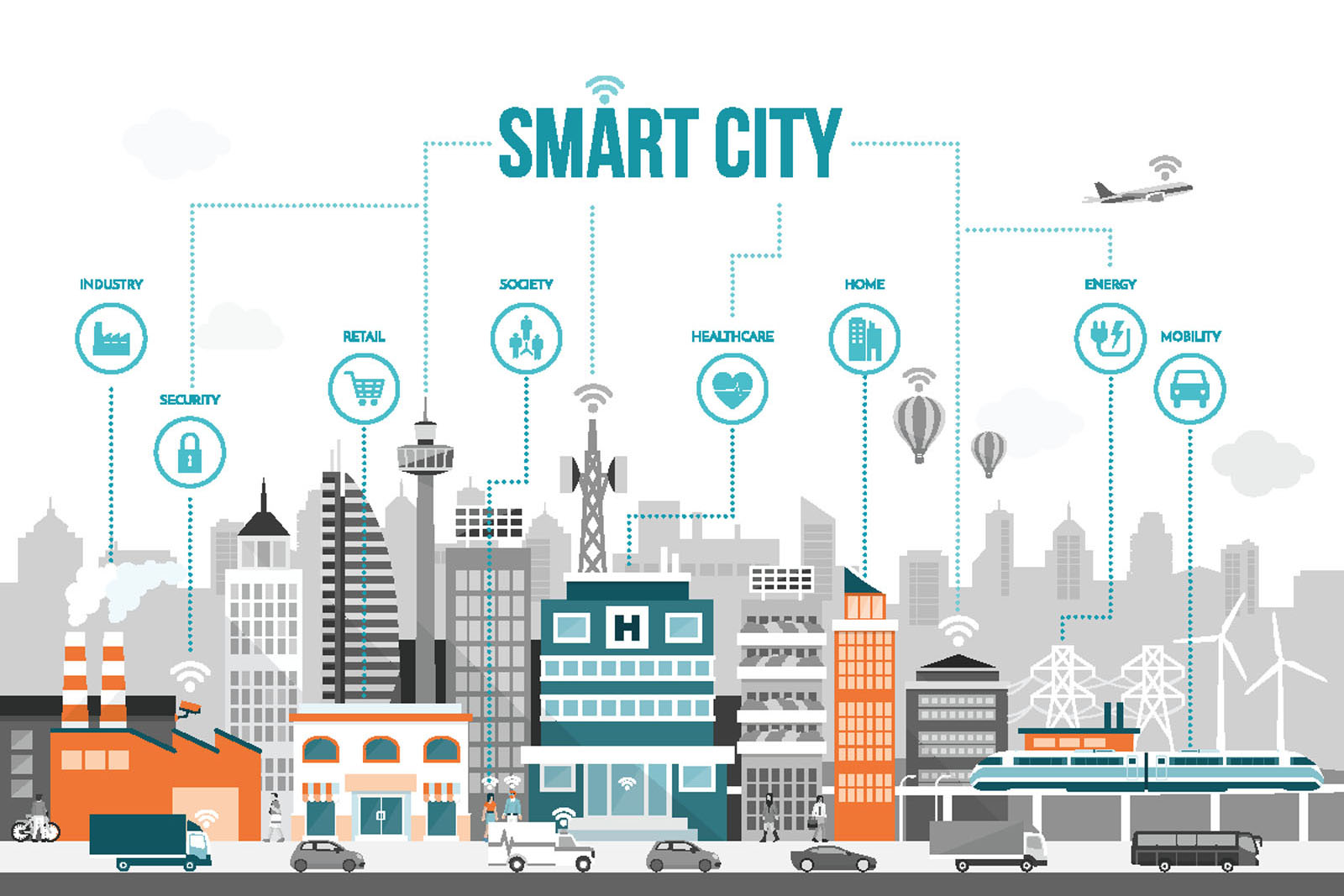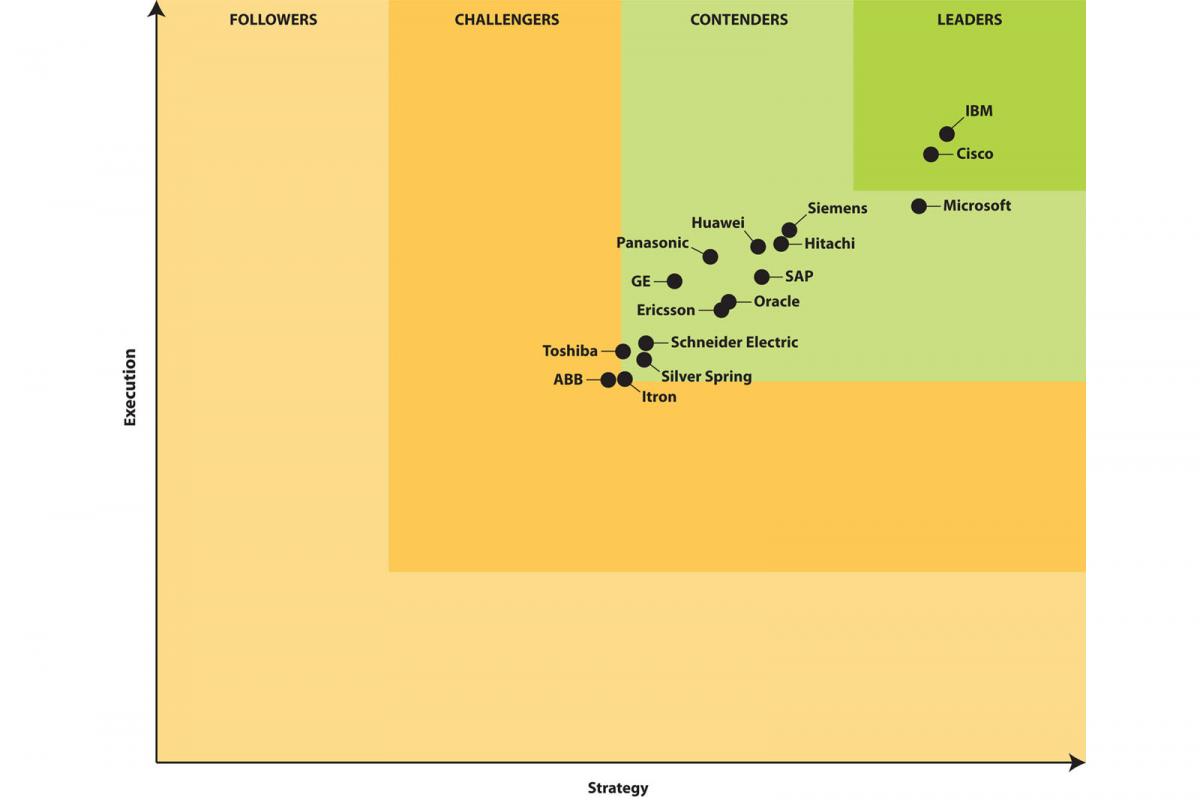
By Susan Cosner and Francine Ramaglia
Aging infrastructure; increasing congestion; greater needs for energy, utilities, public safety, and a variety of other local services; and continuing overall need for speed and reliability in service delivery present critical challenges for local government professionals.
With limited resources, local leaders are looking for ways to meet these demands while also making their communities responsive and efficient. Many are moving to smart city solutions.
With innovations and new technology developing at a phenomenal rate, from working with mainframe computers to working in the cloud in less than three decades, local government managers find themselves looking to what “next practices” are on the horizon.
Strategic Broadband Deployment
Not just a popular buzzword, the smart city concept has been around since the 1990s. Viewed as a holistically functioning machine, a local government delivers an extremely diverse set of services, and it is expected to provide these in smart, intelligent, and connected ways; no longer can these services be delivered in isolated working environments.
All things are interconnected and in today’s Internet of Things (IoT) world, systems and services have to be designed and delivered in smart, connected, and performance-based ways. Developing smart systems, be it transportation, public safety, law enforcement, or any other community-delivered service, the key is to start with the planning and execution of strategic broadband deployment (see Figure 1).
Smart city applications can only function with reliable, redundant broadband. When done correctly, planning for broadband will provide technologies to:
• Optimize all local government operations and reduce operating costs.
• Result in the development of implemented policy that is based on automated data collection.
• Respond proactively to business and industry needs.
• Auto-manage large-scale development projects.
• Anticipate customers’ unarticulated needs.
• Begin to predict disruptive events.
We are not there yet, far from it. Globally, less than 30 cities are expected to become truly smart cities in the next 10 years, with half of them being in the United States and Northern Europe. There are, however, many communities making the shift towards smart city applications and using technological tools, methods, and policies—in wide-ranging areas, not solely for infrastructure and public engagement.
In ICMA’s 2016 Smart Cities Survey, respondents most frequently identified smart city technologies as a priority in the public safety sector, with almost half of respondents (48.9 percent) identifying these initiatives as a top priority in this area.
Customer service/public engagement (32.9 percent), water and wastewater (29.7 percent), telecommunications (26.5 percent), and transportation (26.3 percent) were also among the top five sectors in which smart city technologies were identified as a top priority by respondents.
Cities and counties not officially doing so will be forced to, due to external pressures resulting from disruptive technologies, economic shifts, and commercial changes. These changes include the sharing economy—car transportation/bikes/housing—and the “Amazonification” of retail that is overtaking traditional brick-and-mortar stores.
According to Frost and Sullivan, a Growth Partnership Company, “The smart city concept is the future of every modern urbanized city” and it “will be worth—not just in the tech sector—$1.5 trillion by 2020.” (http://www.frost.com/prod/servlet/press-release.pag?docid=28928203)
Elements of a Smart City
What, then, are the elements of a smart city? Smart city solutions, which connect operations, infrastructure, and the community from top to bottom and cross-function with external organizations and providers, rely upon:
• Technology and innovation using data, integration, sensors, and data analytics.
• Energy deployment and use.
• Urban planning and building.
• Sustainability design and practices.
• Mobility.
• Security.
The key technologies and infrastructure for smart cities are high-speed, redundant broadband, cloud computing, open platforms, smart metering, and wireless sensor networks. See Figure 1 below for examples of common smart city applications that integrate information networks and the built environment.
Harnessing the Power of the Internet
Bottom line, smart cities must rely on broadband connectivity to harness the power of the Internet of Things (IoT), which has and will continue to change the world. The IoT or the number of connections is growing at an ever-increasing rate: Worldwide, individual connections to devices is currently estimated at four per person. In the United States, it is at 13 per person (https://www.mediapost.com/publications/article/302663/north-american-consumers-to-have-13-connected-devi.html).
Online publishing resources Mediapost and Statistica anticipate that the number of connected things and devices worldwide will more than double between 2018 to 2021. IoT, however, is not limited to personal devices. It is built into the interconnection of all local services.
The Smart Cities Council (SCC) produced the internationally recognized Smart Cities Readiness Guide (https://rg.smartcitiescouncil.com), which helps local government employees and stakeholders better understand how communities use smart technology to enhance their livability, workability, and sustainability.
Earlier this year, ICMA and ICMA Strategic Partner Siemens released the report Smart Communities: Rethinking Infrastructure (https://icma.org/documents/smart-commmunities-rethinking-infrastructure-report), which illustrates specific examples of smart city applications in the energy and water sectors.
The report also examines challenges of smart city applications. Some of the insights and lessons learned from the ICMA-Smart Cities Council survey can be found at https://icma.org/sites/default/files/308621_smartcity_snapshot.pdf.
Key Principles
Smart city systems should be planned, developed, and implemented as a microcosm enterprise that spans across all local government departments and functions with these adopted principles:
1. Broadband Is Essential Infrastructure.
• Recognize the infrastructure aspect of broadband technology as a first step in the development of smart city applications at the policy, planning, and implementation levels.
• Implement your broadband (network) infrastructure right the first time with collaborative partners.
• Create a broadband IP infrastructure that is scalable, manageable, and secure by design.
• Accept that mapping broadband systems is clearly a public planning task and useful to non-municipal partners.
2. Adopt an IoT Culture.
• Accept that all things are connected; your city is a complex microcosm of infrastructure, humans, and machines.
• Create an IoT infrastructure that is scalable, manageable, and secure by design.
• Create cross-department ecosystems and cultivate interdepartmental connected collaboration.
3. Leverage Public-Private Partnerships.
• Recognize that broadband partners, technology vendors, and other private industry partners have a key role to play in developing smart cities. Think smart collaboration.
Susan Cosner is vice president, community initiatives, Iowa Area Development Group, Des Moines, Iowa (scosner@iadg.com), and Francine Ramaglia is scholar, Florida Atlantic University, Boca Raton, Florida, (francineramaglia@gmail.com). Both are members of ICMA’s Smart Communities Advisory Board.
Figure 1. The Internet of Things (IoT).
Broadband-enabled technology (fiber, wireless)
• Smart grid
• Free public Wi-Fi
• Smart meters
• Smart street lighting
• Solar roadways
• Unmanned aerial drones
• Surveillance cameras
• License plate recognition (LPR)
Mobility
• Automated vehicle (AV) technology
• Autonomous trucking and transit
• Peer-to-peer car services/ride sharing
• Smart parking
• Real-time bus and transit scheduling
• On-demand urban air transportation
Energy
• Green and renewable energy
• Real-time energy monitoring
• Energy-efficient retrofits and new construction
Corporate Leaders
In June 2017, the market research team Navigant Research identified the top 10 companies building smart communities. The research firm uses these criteria in its vendor ranking: vision; go-to-market strategy; partners; product strategy; geographic reach; market presence; sales and marketing; product performance and features; product integration; and staying power. This Navigant Research ranking of the top 10 divides the firms by leaders, contenders, and challengers:
Cisco
Siemens
Microsoft
IBM
Hitachi
Huawei
SAP
Panasonic
Ericsson GE

Source Image: Navigant Research, 2017, https://www.navigantresearch.com/research/navigant-research-leaderboard-smart-city-suppliers.
New, Reduced Membership Dues
A new, reduced dues rate is available for CAOs/ACAOs, along with additional discounts for those in smaller communities, has been implemented. Learn more and be sure to join or renew today!
